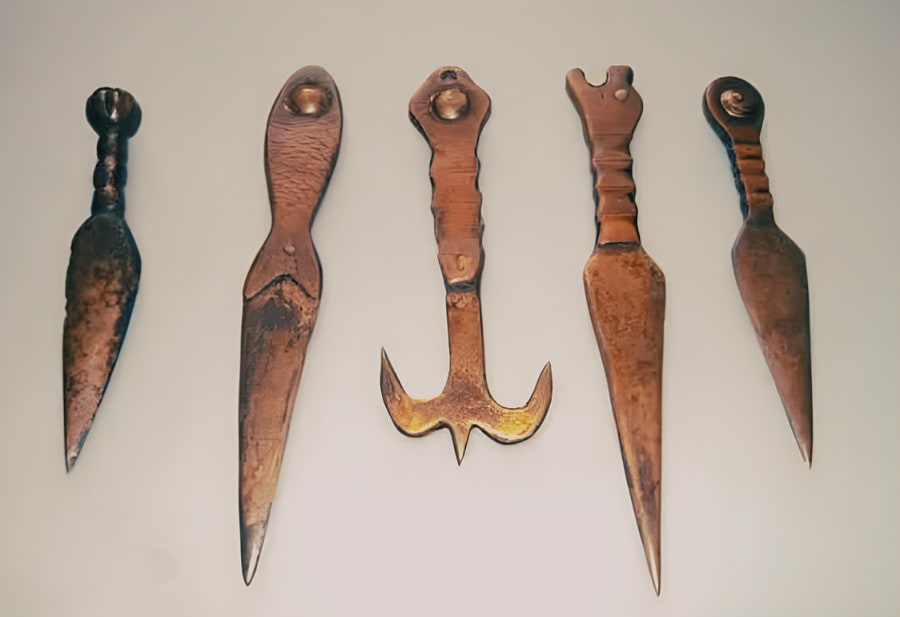
Bronze anqi 暗器 or ‘hidden tools’ from early Chinese history. Private collection.
An Overview of Anqi 暗器 – Hidden Tools/Weapons
In the realm of ancient weaponry, anqi 暗器, lit. ‘hidden tools,’ were tools of choice for swift and stealthy attacks. Small, light, and easily concealed, these tools/weapons were designed primarily for ambush. In general, they are used in rage from 0 to 5 meters but in unusual cases they could also be thrown over distances of tens of metres, carrying impressive speed and power. In a sense, anqi 暗器 extended the capabilities of traditional blades, designed to remain hidden until the final, decisive moment.
The name anqi 暗器 is translated by many today as ‘dark weapons’ or ‘hidden weapons’ but the original meaning is literally ‘hidden/secret/dark and tool/device/utensil’. The contemporary rendering as ‘dark weapons’ or ‘hidden weapons’ misses the nuanced history behind the term. Originally, anqi 暗器 referred not only to the concealment aspect but also to the use of common tools or utensils repurposed for covert tasks, which were kept “hidden” or “secret.” These objects were often mundane or improvised devices used in a manner unknown or unexpected by others, underscoring the term’s meaning as a “hidden tool” rather than just a “weapon.”
Rooted in the martial world, anqi 暗器 reached their height during the Spring and Autumn period 春秋時代 (771 – 476 BCE), becoming popular among wandering martial artists. As firearms emerged much later in the late Qing 清 period, anqi 暗器 lost some of their relevance, yet some practitioners continued to train in these skills, preserving the ancient tradition. Today very few exponents practice with, or understand their true significance.
Categories and Types of Anqi 暗器
Anqi can be classified into four main categories based on their method of deployment: hand-thrown, rope-launched, mechanism-fired, and chemical spray weapons. Within each category are numerous specialised tools, such as:
- Hand-Thrown Weapons: B 標槍 (javelin/spear dart) , jin qian biao 金錢鏢 (money darts), fei biao 飛鏢 (throwing darts), zhi jian 擲箭 (wrist-thrown arrows), fei cha 飛叉 (flying forks), mei hua zhen 梅花針 (plum blossom needles), qian kun quan 乾坤圈 (iron rings), tieqiuliu 鐵球流 (iron ball clusters or iron ball meteors.
- Rope-Launched Weapons: Sheng biao 繩鏢 (rope darts), liu xing chui 流星錘 (meteor hammers), and fei zhua 飛爪 (flying claws) which strike at enemies from a distance and can be retrieved for reuse. Tieqiuliu 鐵球流 (iron ball clusters or iron ball meteors) also had a rope launched version.
- Mechanism-Fired Weapons: Devices such as xiu jian 袖箭 (sleeve arrows) and nu jian 弩箭 (crossbow bolts) use built-in mechanisms to propel them at high speed.
- Chemical Spray Weapons: Xiu pao 袖炮 (sleeve guns) and pen tong 噴筒 (spray tubes) release a burst of blinding or incapacitating substances at the enemy.
Other Notable Anqi 暗器,
- Chuijian 吹箭 or ‘blow dart and chuijiàn tong 吹箭筒 meaning ‘blowgun.’: The blowgun was a covert weapon in the ancient martial world, concealing a small bamboo dart within a blowpipe typically 25–50 cm in length. To be effective as a weapon, the dart was tipped with poison, ensuring lethality even with a small puncture wound. This blowgun came in two main variations: one could double as a short staff when empty, serving as a defensive tool in close combat, while another version was designed as a flute, making it easy to disguise as a harmless musical instrument.
Mastering this weapon required control over breath and precision, as well as knowledge of toxic substances to prepare the dart effectively. These qualities made the blowgun a valuable choice for operatives who needed a discreet yet deadly tool for stealth missions.
- Shouwan jian 手腕箭 – Wrist-Thrown Arrow: known in Traditional Chinese as , was crafted from slender bamboo, designed for agility and ease of use. With a quick flick of the wrist, practitioners could launch these arrows with surprising speed and accuracy. Training with this weapon often began with heavier iron arrows to build the necessary strength and control in the wrist and forearm. Only once this strength was developed would practitioners transition to bamboo, where the lighter weight allowed for refined precision. This weapon was particularly useful in stealth contexts, as it required minimal movement and could be concealed easily, while the training method enhanced dexterity and accuracy essential for stealth practitioners.
- Cigu 刺骨 – Bone Piercer: The cigu 刺骨, or “bone piercer,” was a specialised weapon in ancient China, often a small, sharply pointed tool crafted for deep penetration into the body, capable of bypassing armour or hitting vulnerable points with precision. Used in close combat or assassination, the cigu 刺骨 demanded a unique methodology, relying on precise angles, targeted strikes, and often the element of surprise. Unlike larger weapons designed for force, the cigu 刺骨 was valued for its subtlety and efficiency, making it a choice weapon among stealth practitioners and covert operatives. Its effectiveness lay in both the skill of the wielder and the weapon’s inherent ability to cause significant damage with minimal movement, an ideal trait for use in tight quarters or under concealed circumstances.
-
Kuai Zi 筷子 – Chopsticks: Chopsticks, traditionally known as mù kuài 木筷 for wooden chopsticks and tiě kuài 鐵筷 for iron chopsticks, were not only used for dining but also adapted in some contexts as projectile weapons. In these instances, practitioners would carry poison on the tips of the chopsticks, turning them into stealthy and unexpected weapons for assassination or self-defence.
The lightweight nature of bamboo or wooden chopsticks allowed for quick, agile movements, enabling users to launch them with precision. In skilled hands, these seemingly innocuous utensils could deliver deadly effects, demonstrating the resourcefulness of martial practitioners who transformed everyday items into effective tools for stealthy operations.
The tools we have mentioned here are just a few examples of the vast array of hidden weapons in the ancient Chinese arsenal. This extensive collection of weaponry showcases the ingenuity and adaptability of practitioners who employed everyday objects and specialised designs for stealth and combat. From the cigu 刺骨 (bone piercer) to the wrist-thrown arrow and the versatile blowgun, each weapon was meticulously crafted for precision and effectiveness in close encounters. The incorporation of poison and the ability to transform commonplace items into lethal tools illustrate a sophisticated understanding of both martial strategy and psychological warfare. This rich tradition of hidden weaponry reflects the complex interplay between art, culture, and the necessity for self-defence in a tumultuous era.
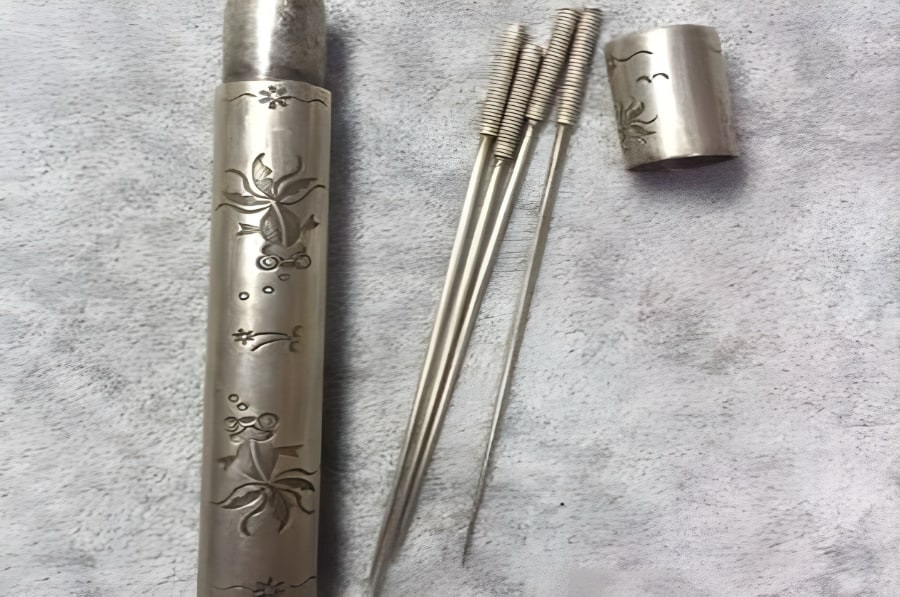
Mei hua zhen 梅花針 (plum blossom needles)
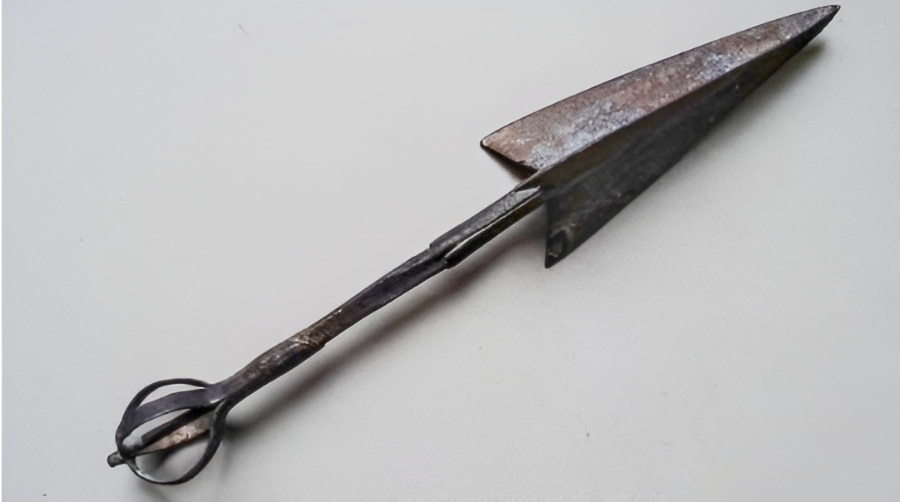
B 標槍 (spear dart) This is only one type of many.
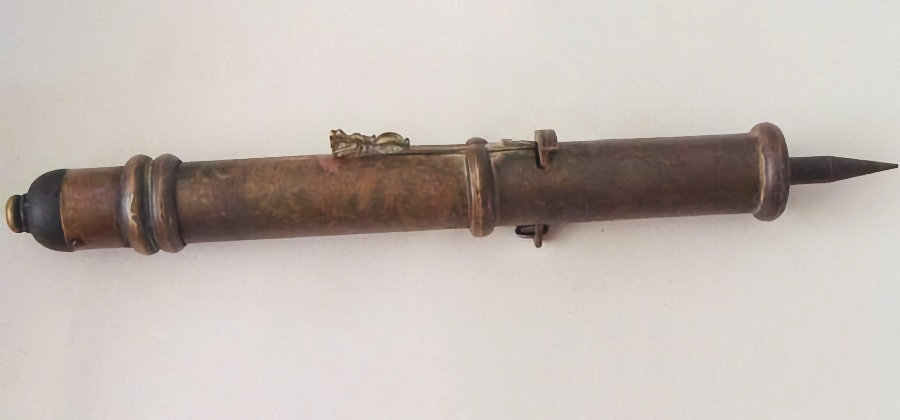
Xiu jian 袖箭 (sleeve arrows)

Fei biao 飛鏢 (hand thrown darts)
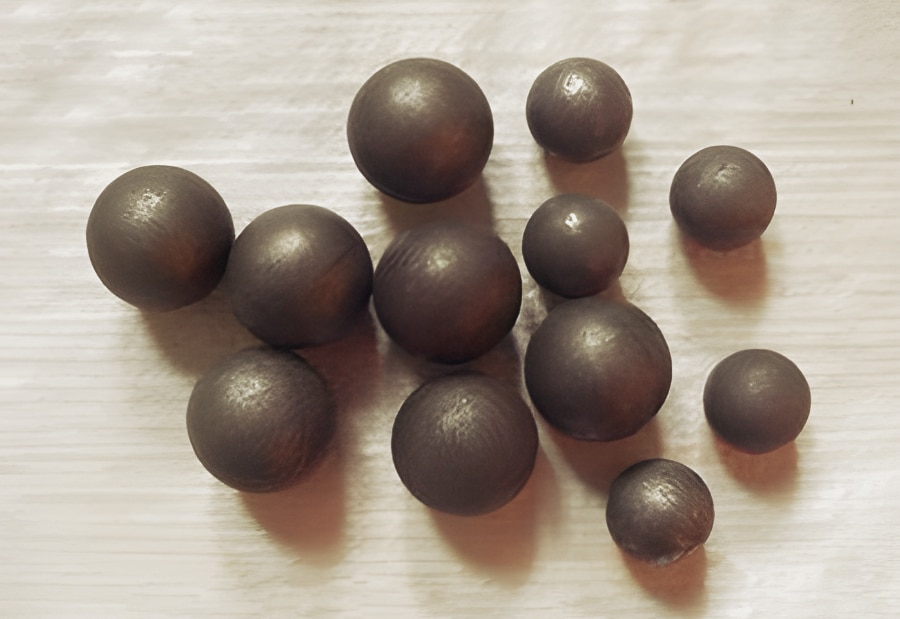
Tieqiuliu 鐵球流 (iron ball clusters or iron ball meteors)
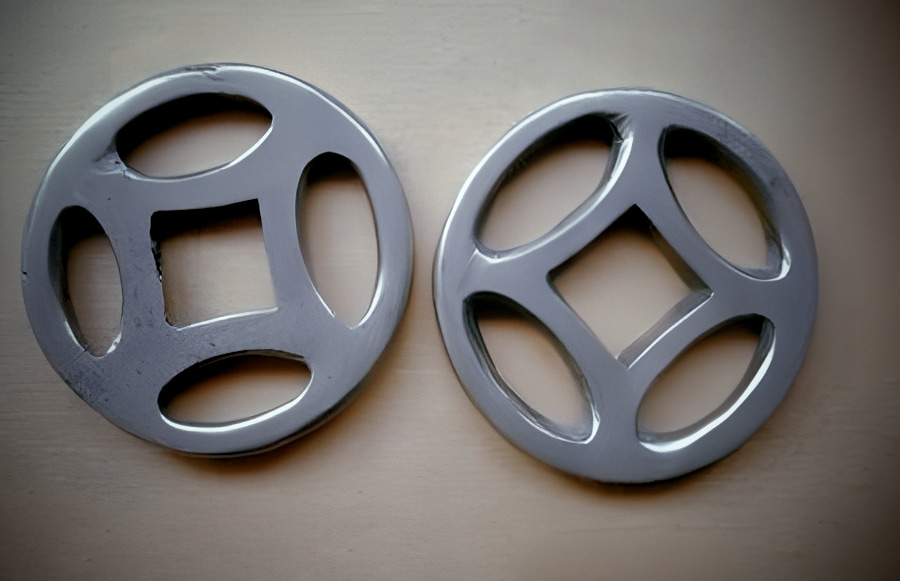
Jin qian biao 金錢鏢 (money darts)
